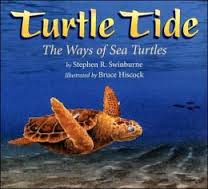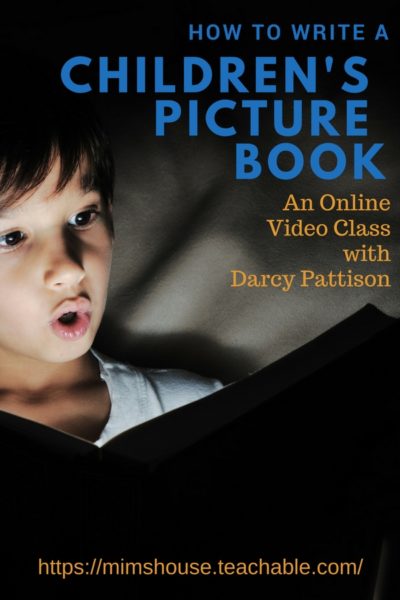I’ve written before about writing a children’s picture book in this 30 Days to a Stronger Picture Book Series and the basics remain true. However, nonfiction picture books are currently getting a fresh look, mostly because of the education reforms known as Common Core. It requires elementary students to read 50% nonfiction, 50% fiction. That percentage of nonfiction rises to 70% in high school, which impacts longer nonfiction. But today, I’ll concentrate on the impact on picture books.
One of the more interesting developments is that educators, publishers and writers are looking at nonfiction in seven new ways.
- Narrative Nonfiction. The last 25 years has seen the rise of narrative nonfiction, or nonfiction that is told with fiction techniques. Sometimes called creative nonfiction, this genre emphasizes the story embedded in the search for information. Nonfiction writers use scenes, sensory details, and work for a traditional story arc with a problem that is resolved in a climax. This type story has been popular because it readily engages readers.
Examples of narrative nonfiction picture books:

Turtle Tide: The Ways of Sea Turtles This book is one that has you hanging on the edge, waiting to see if any of the 100 sea turtle babies will survive. Fantastic build to a satisfying climax.- Wisdom, the Midway Albatross. My own picture book about the oldest known wild bird in the world uses a series of vignettes that climaxes with the Japanese tsunami overrunning Midway Island.
- Data (Facts First). Let’s face it: some kids just like facts. Browseable books like the Dorling Kindersley books (white background with stunning photos and related facts) are filled with data. It’s rather like flipping through an encyclopedia of a certain topic until you find the information that fascinates you, stopping to read, then flipping on. It’s the Guiness Book of World Records. Just the facts, Ma’am.
- Expository (Facts Plus). Taking it a step farther are nonfiction books that give facts but connect them in some way. It’s an explanation of some kind, but doesn’t have to have the story. Often in a picture book, the author reaches for a poetic voice, but the intent is still just an explanation. For an example, look at Frogs by Nic Bishop
- Books in the Disciplinary Thinking or Experts at Work are nonfiction books that ask how scientists and historians ask questions, evaluate research and develop theories. Sometimes these are biographies of a scientist or historian.
The Scientists in the Field Series from Houghton Mifflin is the perfect example of this type books. See the 2011 Siebert Winner Kakapo Rescue: Saving the World’s Strangest Parrot , written by Sy Montgomery, photographs by Nic Bishop.
- In Inquiry (Ask and Answer) Books, the author begins mimics the process of scientific discovery by asking a question and then allowing the readers to follow the process of finding the answers.
The Elephant Scientist is one of the Scientists in the Field Series from Houghton Mifflin, and a 2012 Siebert Honor book. Unlike some of the other book in the series, this one begins with a question: how do elephants hear? Is it possible that they hear sounds through their feet? This leading question is woven throughout the book and indeed, gives it even more of a narrative nonfiction feel. It’s easy to from this book that the subgenres will be hard to tease out. Is this book narrative nonfiction, Experts at Work, or Inquiry? It’s all three. Still, even thinking about it in this way means that we, as writers, have more choices, even when we choose to cross subgenres.
- Interpretation or Point of View nonfiction titles are not popular right now, but may become a stronger subgenre under the Common Core, as it asks students to do analytical thinking. Here, an author researches a subject in detail, then provides an interpretation of the information. Such books would model what students are required to produce in their own essays.
- Action Books invite kids do more than sit in a chair and read. Some include activities or experiments, and some are a call to action. They encourage kids to go out and do something that will make a difference in the world.
I Love Dirt! 52 Activities to Help you and your Kid Discover the Wonders of Nature asks kids and parents get outdoors and do something.
Writing the Nonfiction Picture Book
When you look at a topic—maybe Dads in nature—there are multiple slants you could take on the subject. And now, there are multiple ways to approach the research and writing.
Narrative nonfiction. For this category, there’s no book without a storyline. As you research, you are looking for the story embedded in the details.
Data/Facts. Here, you are looking for solid, reliable, verifiable facts. Of course, you are in any of these categories, but for this category, it is the facts that shine. You will have to organize the book in some way, but the natural divisions in the data will determine the book’s structure.
Expository. Explanations include facts that back up a certain premise or statement. As you research, you are looking for an overarching idea that the facts will explain. Sometimes you’ll start with what needs explanation but sometimes, it will emerge from the research and writing.
Experts at Work. This is a fun category because it means you must seek out experts and follow them around. Writer George Plimpton, who recently passed away, if famous for joining the Detroit Lions American football team in order to give his readers the most intimate sense of playing in this team. This type of immersive journalism may be an extreme example of Experts at Work, but it certainly fits the goals. The story here (and it is often a narrative) is about the expert not necessarily about what the expert is studying or doing.
 Interpretation or Point of View. In some ways, picture book biographies are an interpretation of a person’s life. Because the space is limited, these biographies can only cover a portion of a person’s life and by necessity become an interpretation. Dizzy, by Jonah Winters, is about Dizzy Gillespie, the famous Be-pop trumpeter. It leaves out many issues of his family and uses literary techniques to create a sense of what be-pop music is like. It’s a definite point of view. When you write this type story, look for what grabs you personally in a story or set of facts; how can you bring that to the forefront? Are these popular? Dizzy got starred reviews in five different review journals.
Interpretation or Point of View. In some ways, picture book biographies are an interpretation of a person’s life. Because the space is limited, these biographies can only cover a portion of a person’s life and by necessity become an interpretation. Dizzy, by Jonah Winters, is about Dizzy Gillespie, the famous Be-pop trumpeter. It leaves out many issues of his family and uses literary techniques to create a sense of what be-pop music is like. It’s a definite point of view. When you write this type story, look for what grabs you personally in a story or set of facts; how can you bring that to the forefront? Are these popular? Dizzy got starred reviews in five different review journals.
Action Books. While facts inform the action book category, it’s what the reader does with those facts that matters. In fact, the emotions evoked by the facts are as important as the facts themselves. It turns into a sort of persuasion essay, using facts to back up the need to do something. Look for facts that back up the actions you want readers to take. Build a strong, emotional case for that action.

This is great! I’m going to definitely print this off and keep it for a reference. I just took 2nd place in the children’s category of our WVWriter’s annual spring writing contest. It was a NF picture book. I had written this quite a while back but had never did anything with it and on a whim sent it to the contest. It is written in rhyme and I have sidebar information to accompany the story. The judge said it was a strong, well written NF story, but had a weak last stanza. Guess I’m going to have to work on that last stanza before sending it out.
great post, Darcy! This is really helpful & now printed off & posted by my desk.
Thanks for this very useful post.